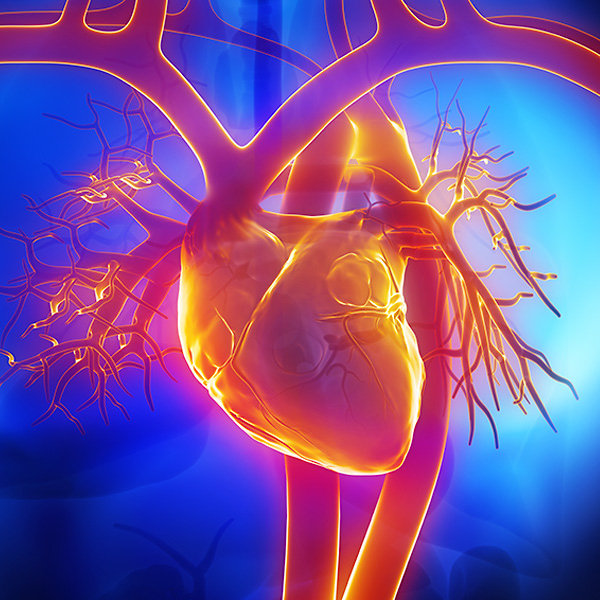Heart Failure
Overview and Facts about Heart Failure
Heart failure is a condition in which the heart cannot pump blood effectively through the body. The chambers of the heart stretch to try to hold more blood, but over time, the muscle becomes too weak.
Contrary to popular belief, heart failure does not mean that the heart has stopped working but instead that it cannot pump blood as well as it should. As of 2018, approximately 6.5 million people in the United States live with heart failure, and that rate is on the rise.
Signs and Symptoms of Heart Failure
There are two types of heart failure: systolic and diastolic. If you have systolic heart failure, your heart does not squeeze with enough force to pump oxygen-rich blood throughout your body. If you have diastolic heart failure, your heart squeezes normally, but the main pumping chamber cannot relax properly. This means less blood can get into the heart and blood pressure increases in the lungs.
The major signs and symptoms of heart failure include:
- Shortness of breath
- Constant coughing or wheezing
- Buildup of fluid, also called edema, in the legs, arms, feet, lungs or other organs (associated with diastolic heart failure in particular)
- Feelings of fatigue or lightheadedness
- Lack of appetite
- Nausea
- Confusion or an inability to think clearly
- Elevated heart rate
- Very rapid weight gain from fluid retention
The symptoms you have can depend on the side of the heart experiencing failure. Left-sided heart failure causes fluid backup in the lungs, which leads to shortness of breath. Ride-sided heart failure, on the other hand, causes fluid to back up into the abdomen, legs, and feet, which causes swelling.
Causes and Risk Factors of Heart Failure
The primary causes of heart failure are other heart conditions that damage the heart, including:
- Coronary artery disease
- Heart attack
- Cardiomyopathy, or damage to the heart muscle (without coronary artery disease)
- High blood pressure
- Kidney disease
- Heart valve disease
- Diabetes
Lifestyle factors can also play a role in risk, including:
- Smoking
- Drinking alcohol
- Being overweight or obese
- Leading a high-stress life
Tests and Diagnosis of Heart Failure
To test for and diagnose heart failure, your doctor will first review your medical history, talk to you about your symptoms and perform a physical examination. They will use a stethoscope to listen for signs of congestion in the lungs and an abnormal heart rate — both of which could suggest heart failure.
To confirm the diagnosis, the doctor may order some of the following tests:
- Blood tests — These tests check for signs of diseases that can affect the heart.
- Chest X-ray — X-rays provide imagery that allows the doctor to check the state of your lungs and heart.
- Electrocardiogram (ECG) — In this test, electrodes are attached to the chest and are used to provide imagery of the heart pumping function and valve abnormalities.
- Cardiac MRI — This type of MRI provides a more sophisticated form of cardiac imaging.
- Stress test — A stress test is used to provide insight into your heart health, specifically by measuring how it responds to exertion.
Treatment and Care for Heart Failure
Heart failure is a chronic health condition that requires treatment for the rest of your life. However, with the right treatment and lifestyle management plans, you can live longer and avoid sudden death. Your doctor will likely recommend some combination of the following treatment options:
- Medications to help address the causes of heart failure
- Surgery and medical devices, such as a pacemaker, to correct any structural issues that might cause heart failure
- Palliative care to improve your quality of life and ease severe symptoms
Featured Video
Loyola Minute: Heart Failure Treatments

